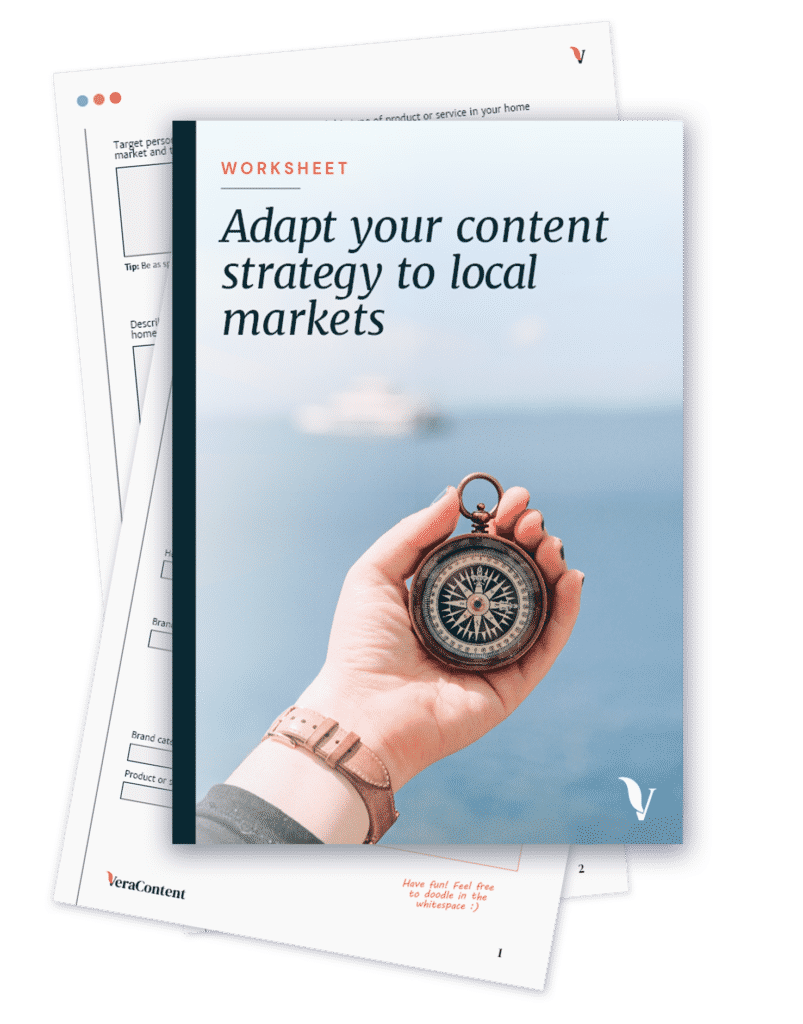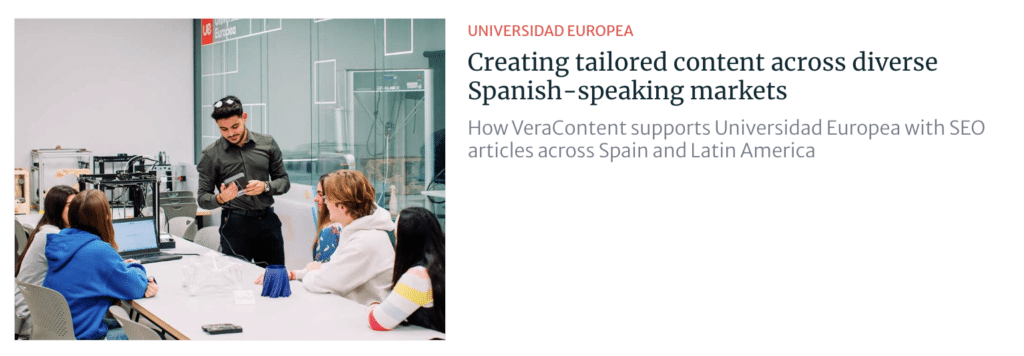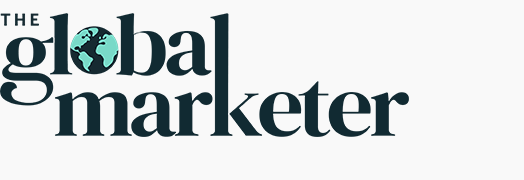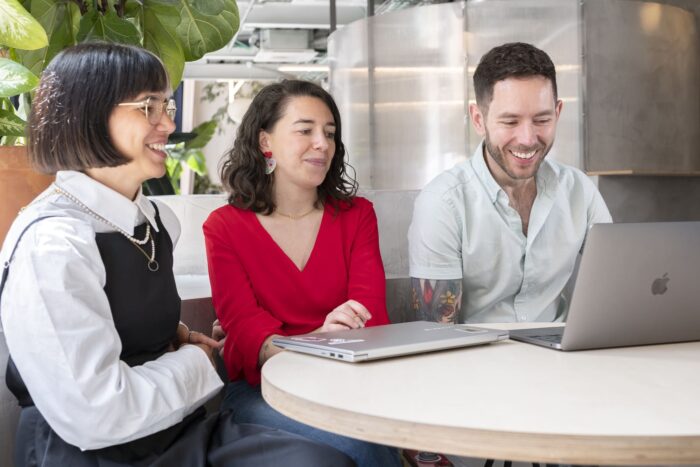Creating great content is hard enough in one language. Doing it in five, 10 or 20 is a whole different challenge.
Global brands are under pressure to produce high-quality, localized content faster than ever. AI tools like ChatGPT make it seem simple, but without the right systems and cultural insight, scaling multilingual content can quickly lead to inconsistent messaging and wasted resources.
In this article, we’ll show you how to scale content creation across different languages without losing quality or brand consistency. You’ll learn how to combine AI, localization workflows and your team’s expertise to create content that resonates in every market.
The challenge of scaling multilingual content
Most global brands know that speaking their audience’s language—literally—is key to engagement and conversion. However, scaling multilingual content is often one of the greatest challenges for marketing teams.
Beyond the translation itself, scaling multilingual content is challenging as it involves:
- Maintaining consistency across languages: Content must be localized while maintaining brand voice and terminology. Teams need to create and maintain brand glossaries and translation memories (TMs) to avoid inconsistencies.
- Understanding cultural and regional nuances: Not every translation will work in every market. Content translated into Brazilian Portuguese won’t be as effective in Portugal, for example. On occasion, content may need to be significantly altered from its original version to better adapt to another culture.
- Managing complex workflows: Scaling multilingual content involves working with a potentially massive team of translators, editors and even designers. Many of whom may be freelancers who require individual communication, billing and more.
- Balancing quality and resources: Both your translation and QA processes need to be scaled, which can make projects more expensive than initially anticipated. Marketers need to assess what content needs translation most to best allocate resources.
- Anticipating unexpected changes: Visual content localizations, particularly across languages that read text in different directions, often require graphic redesigns. These and other unexpected changes can cause delays and cost increases for companies that don’t expect them.
- Incorporating localized SEO: Directly translating keywords rarely works. Brands need local keyword research, best performed by people who live in that market.
The key to addressing these challenges is to create clear, scalable workflows that maintain consistently high-quality multilingual content.
See also: 25 AI marketing tools to transform your workflow right now
Building workflows for multilingual content at scale
Scaling multilingual content requires one thing above all: a clear, repeatable workflow.
An effective workflow includes:
- Clear roles and responsibilities for each team member
- Centralized KPIs and parameters for what content to prioritize based on market value and brand goals
- Shared language assets, including TMs and brand voice glossaries
- Defined approval checkpoints and timelines
- Automation for repeated steps
- Collaborative translation tools
See also: How to scale content creation without hiring
Here’s what an effective workflow looks like in practice:
1. Content creation
Localization starts with material created with translation in mind. Writers follow global content guidelines, using clear and concise language that avoids things like idioms, complex structures and highly culture-specific references.
Local teams identify the target metadata for a piece of content (including page titles, meta descriptions and alt text) and the SEO keywords.
Download our free worksheet to get started with adapting your content strategy to local markets:

2. Content intake and preparation
Once content has been drafted, its text is extracted and fed into a translation management system (TMS). Automated extraction and transfer can help reduce human errors. Content is prepared for translation by cleaning up the formatting and assigning a priority level.
3. Translation and localization
Professional translators, a machine or a mix of both translate copy. Translators pull from a centralized glossary and TMs, particularly for frequently translated words and phrases. A style guide for each language ensures tone stays consistent across all markets.
See also: Translation vs. localization: What’s the difference and why should you care?
4. Review and QA
Translated content goes through a multi-pronged QA process with human editors to ensure quality. Each step has its own review checklist, allowing editors to assess potential issues systematically.
- Automated QA tools handle the basics, catching untranslated text, missing glossary terms and formatting issues.
- Linguistic QA focuses on proofreading, appropriate terminology usage, style and tone alignment and cultural compliance. Native reviewers also check that the text complies with all local regulations.
- Functional QA checks how the text behaves in context, ensuring it fits in its layout, special characters render correctly and formatting (including links, bullet points and tables) is preserved.
Beyond functioning as a safety net to ensure quality at scale, the QA cycle helps make future translations even more efficient. Every correction is added to your TM and glossaries, and feedback is integrated into your style guide to reduce errors in the long term.
5. Final approval and publishing
Fully polished work is passed to in-market reviewers or regional leads, who may review the copy one last time before giving the OK. Once content is approved, the translation is added to your CMS, which notifies local teams so they can deploy content as needed.
6. Feedback and improvement
Your CMS and other analytics tools collect performance data to determine whether content is effective. Both customers and in-market stakeholders will often reach out with feedback.
Teams gather this information and use it to update and refine their TMs and glossaries, further improving workflows. Marketers also conduct regular audits to ensure brand voice consistency, as quality drift can sometimes happen.

How to scale content creation with AI tools
AI tools have helped content marketers do more with less. With generative AI programs like ChatGPT and the like, something that took hours to do before can now take only seconds.
However, global brands should still focus on having high-quality translations, not just translating everything they can. While AI has made translation software more accurate than ever before, it can (and will) still make mistakes.
Completely AI-generated content can also rank lower on search engines than higher-quality content, and may overall be less effective. Many consumers say their perception of a brand is worsened when they think it uses AI-generated content, too. While content originally written by a professional and translated by AI may “pass” more easily than completely AI-generated content, it’s still something to keep in mind.
See also: Generating quality global content at scale using AI tools
So, how can you implement AI into your multilingual content workflow without messing up your quality? It all comes down to a practical framework:
Content prioritization
As previously mentioned, effective workflows include a content prioritization system that ranks content based on its type and external visibility. You can use this system to decide when to implement AI translation.
High-stakes marketing or legal content, for example, should always be done by a human. Something simple, like the localization of a short product description, could be done by AI, though, as long as a native-speaking editor reviews it.
See also: The key to consistently creating content at scale
Keep it centralized
While your translation workflow is ideally already centralized, your AI tools should be, too. Create a master list of prompts or templates in one language (ideally your team’s primary language) that you use to translate content.
These prompts should include important information like your brand voice to maintain consistency. Watch our demo below of how to set up a prompt library in Monday.com.
Customize models
If you want to take it a step further, most LLMs offer customization services to give you even greater control of a tool’s output. You can train these custom models on things like your brand’s glossary, target audience and ideal tone to make translation smoother and more in line with your standards.
See also: How to scale up content production with AI & automation tools
The personal touch
No matter how good your AI tool is, you should always have an expert editor review any AI-translated content before publishing. Native editors refine quality, catch any brand voice mistakes that AI missed and ensure that the final product is appropriately adapted to the target market, addressing elements like idioms and humor that LLMs can’t always properly localize.
Measure success
While implementing AI can save you money while increasing your production, track KPIs beyond cost savings. Are your AI-translated pieces as effective as human-translated ones? How much time are you actually saving when factoring in the editing and review process?
Use these insights to refine your AI implementation.
See also: Global social media reporting: Essential KPIs you should be tracking
Success stories: Scaling content creation across languages

As Universidad Europea expanded its reach across Spain and Latin America, the university needed a scalable way to produce high volumes of localized, SEO-optimized content for different audiences.
To meet this challenge, Universidad Europea partnered with VeraContent to develop a clear workflow and assemble the right team. Together, we built a dedicated group of four linguists—three in-house specialists for Spain and one regionally based Latin American linguist—supported by a customized style guide and project management system to ensure quality and consistency.
Today, VeraContent produces 32 monthly articles tailored to Spain, Colombia, Ecuador and Peru, covering specialized topics tied to the university’s programs. This streamlined approach has enabled Universidad Europea to maintain its academic tone, reach students in multiple markets and strengthen its position as a leading private university across the Spanish-speaking world.

Finding the balance between scale and quality
While AI tools can make it tempting to scale multilingual content by producing more, global marketing demands quality at a pace you can maintain. Automation and AI can help your team move faster and your resources go further, but they work best when paired with clear workflows and your teams oversight.
The challenge is in finding the right balance between efficiency and quality. Too many corners cut, and you may risk damaging brand credibility. Investing your full attention into every piece of content, on the other hand, may have your team struggling to keep up with demand.
Prioritization, smart applications of AI tools and strong systems provide the framework, but it’s essential to keep people at the center of your processes. From skilled linguists who understand your audiences to your team’s knowledge of your brand goals, people are the ones who will ultimately help you master the art of scaling multilingual content without sacrificing consistency and quality.
Do you need help with scaling your global content marketing? Get in touch with our team to find out if you qualify for a Free Content Consultation.

